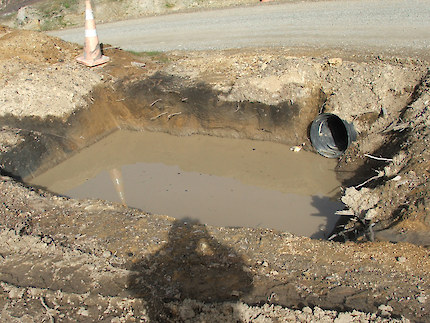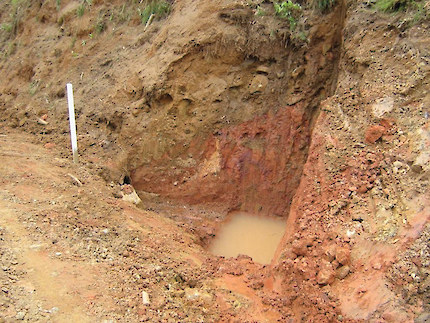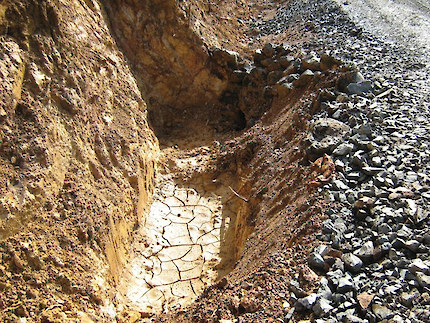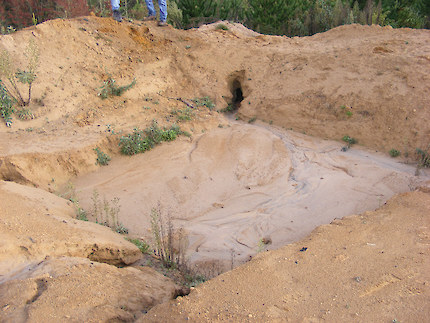Silt traps and soak holes help to reduce sediment entering water bodies. They allow heavier sediment to settle, then the water either discharges (silt trap) or drains away (soak hole). Care must be taken to ensure they are not a vehicle safety hazard.

- Constructed large enough to slow the water so that the coarse sediment can settle on the bottom
- Made deep, as they can fill in rapidly
- Located close to the source of the sediment
- Built on solid ground as otherwise water may drain into the fill and increase the risk of a fill failure
- The outlet is broad and level to reduce scouring

- A large sediment trap built too close to the road.
- This is an unnecessary safety hazard because it could be constructed further away from the road. Safety cones should not be needed
- It is unsafe to build these on road corners

- A small silt trap built well
- A small excavator bucket can easily clean it out

- The silt trap is too small, and the culvert mouth is too close to the road edge
- The silt trap has stopped working

- A silt trap and fence were used to reduce sediment entering a stream
- Silt traps and sediment fences are effective when used together

- Fine slash like branches and needles can effectively trap sediment
- These can be used in many situations like at culvert outlets

- The silt trap was built in a safe location
- It is located where an excavator can easily clean it out
- It has been built away from a watercourse or stream

- This silt trap failed when the water drained through the fill
- Do not build on fill as it will increase the risk of bank failure
- The trap needs maintenance to remove sediment